The rear delt fly machine is a versatile piece of gym equipment designed to target and strengthen the rear deltoid muscles. These muscles play a crucial role in overall shoulder stability, strength, and posture. The machine is an excellent addition to any upper body workout routine, offering a range of benefits for individuals aiming to improve their fitness and physique.
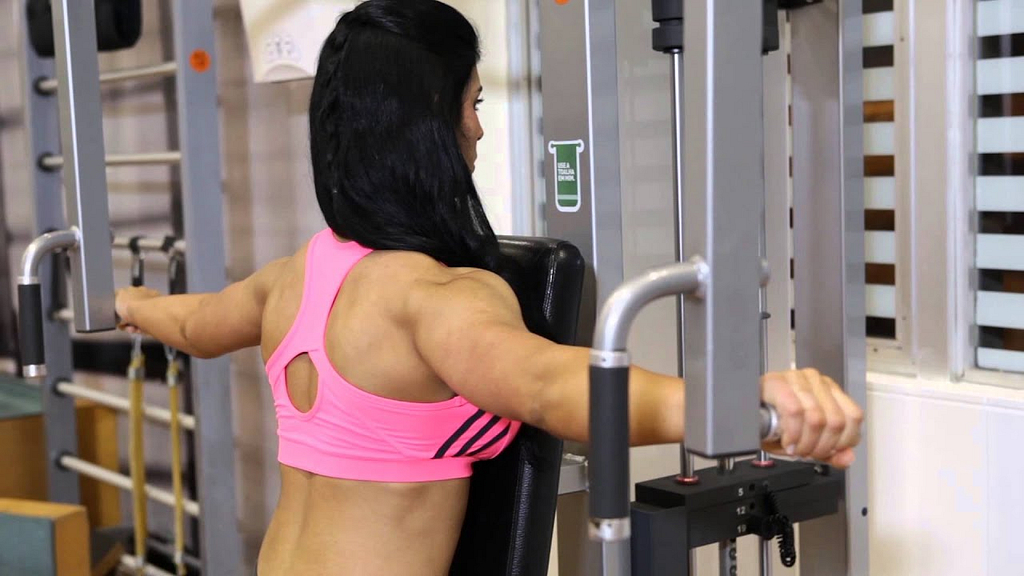
Utilizing the fly machine can lead to significant improvements in upper body strength, particularly in the shoulder muscles. This, in turn, enhances posture and reduces the risk of shoulder-related injuries. In addition, the rear delt fly machine is known for its ability to isolate the targeted muscles and provide a more focused workout compared to other shoulder exercises.
Not only does the rear delt fly machine contribute to strength and posture, but it also offers various benefits for those looking to maximize their exercise efforts. With proper form and technique, users can achieve well-rounded shoulder development, improve muscle balance, and enhance overall performance, making it an essential component of any fitness enthusiast’s training regimen.
Understanding the Rear Delt Fly Machine
Parts of the Machine
The rear delt fly machine is a gym equipment designed to target the posterior deltoid muscles, providing a great alternative to dumbbell lateral raises. The machine typically consists of a pad for chest support, horizontal handles for grip, and a weight stack to adjust the resistance according to individual needs.
How It Works
The rear delt fly machine works by allowing users to perform a pulling movement, isolating the shoulders and engaging the rear deltoids. The starting position involves standing or sitting with the chest pressed against the pad, gripping the handles, and adjusting the weights according to the desired resistance.
During the movement, users pull the horizontal handles apart in a controlled manner, ensuring a full range of motion. The handles should move parallel to the floor until the arms are fully extended outwards. This range of motion is essential for achieving the best results and effectively targeting the posterior deltoids.
The rear delt fly machine helps increase shoulder stability and posture, benefiting overall upper body exercises like overhead press, barbell bench press, and deadlifts. By incorporating this equipment into workout routines, users can strengthen the target muscles and improve overall performance in compound exercises.
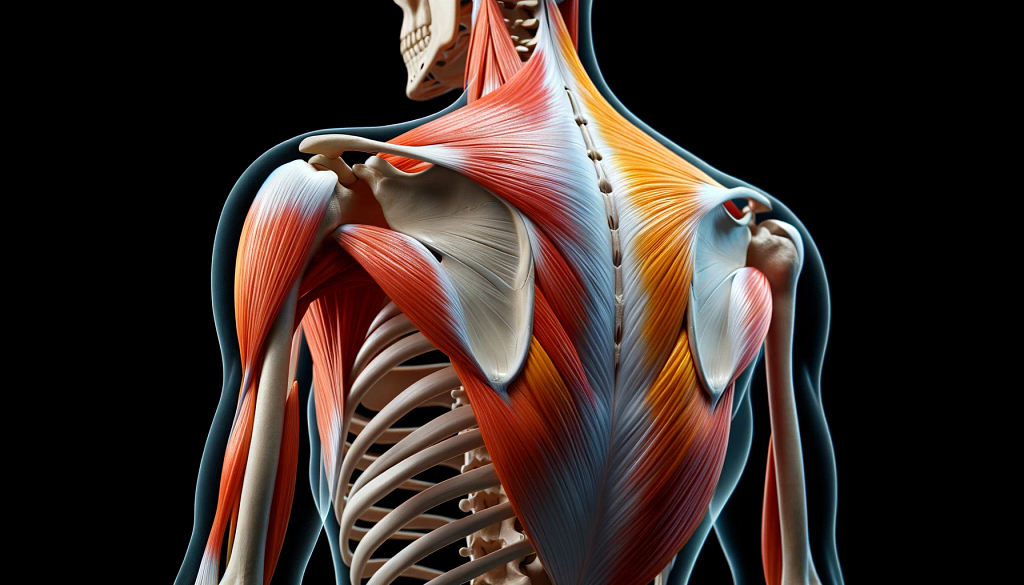
Muscles Worked on the Rear Delt Fly Machine
The rear delt fly machine is a beneficial workout equipment designed to target key muscles in your shoulders and upper back. By understanding which muscles are primarily and secondarily involved, you can ensure that you’re properly working those muscles during your exercise routine.
Major Muscles
The posterior deltoids, also known as the rear deltoids, are the primary muscles worked during the rear delt fly exercise. These muscles are crucial for building overall shoulder stability and strength. They play a significant role in various compound exercises such as the overhead press and the deadlift1.
Secondary Muscles
In addition to the posterior deltoids, several secondary muscles assist during the rear delt fly exercise. These muscles include:
- Rhomboids: These muscles run from the spine to the scapula and aid in retracting the scapula, helping maintain proper posture and prevent shoulder injuries2.
- Trapezius: This large muscle spans the back of the neck, shoulders, and upper back, contributing to various shoulder movements, including elevation, depression, and upward rotation3.
- Lats (Latissimus Dorsi): While not the main focus of the exercise, the lats also play a role in stabilizing the shoulder during the rear delt fly movement.
- Infraspinatus and Teres Minor: These two muscles comprise part of the rotator cuff and work together with the posterior deltoids to provide shoulder stability during the fly4.
Overall, the rear delt fly machine exercise effectively targets and strengthens both major and secondary muscles, leading to improved shoulder function and upper body support.
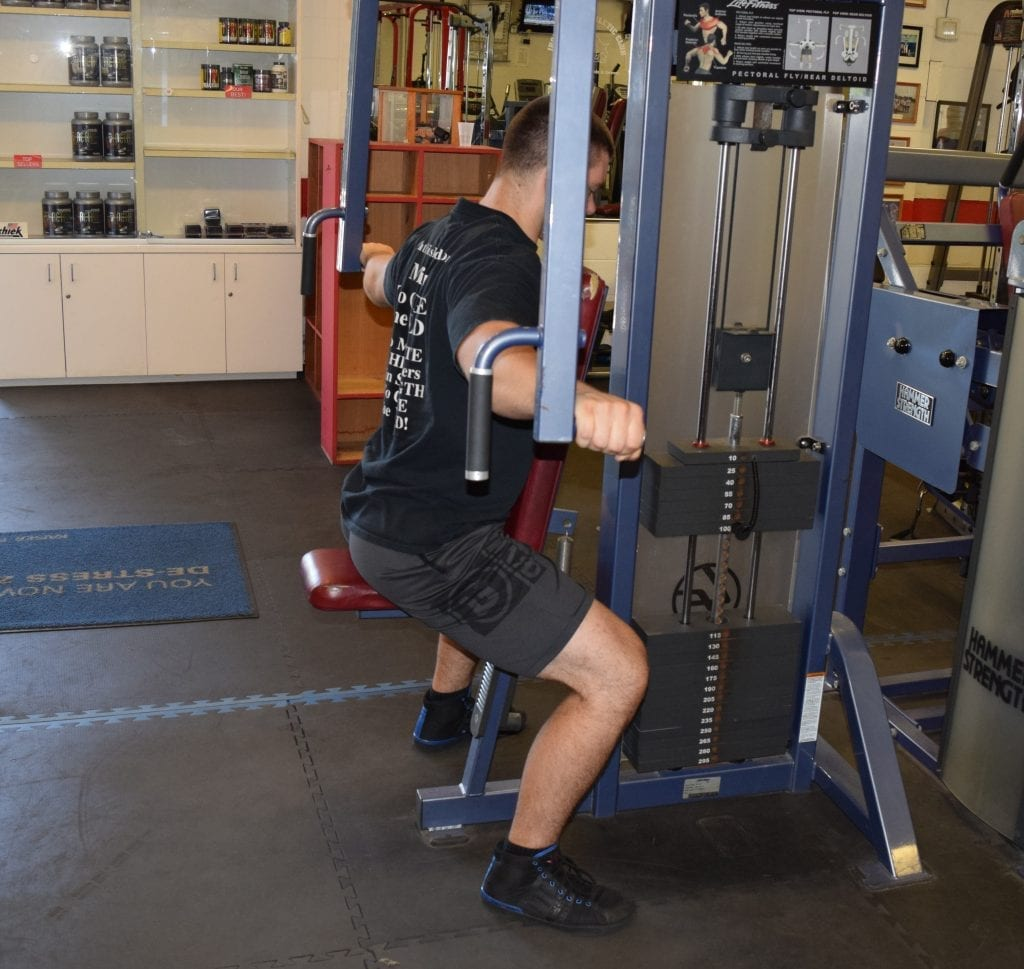
Proper Form on the Rear Delt Fly Machine
Correct Posture
Maintaining correct posture while using the rear delt fly machine is essential for optimal results and preventing injury. Begin by sitting on the machine with your chest pressed firmly against the pad. Ensure your feet are flat on the ground, and your lower back is in a neutral position. Adjust the seat so that the handles are at shoulder height, allowing for proper alignment of your shoulder joints and shoulder blades.
Right Grip
To properly grip the rear delt fly machine handles, use a pronated grip (palms facing down). Your grip should be firm but not overly tight to prevent unnecessary tension in your wrists, forearms, and elbows. Ensure that your arms are parallel to the floor and in line with your shoulders, avoiding any elevation or depression of your shoulder blades. This will help achieve proper muscle activation in the posterior deltoids and minimize stress on other parts of the shoulder joint.
Setting the Weight
When using the rear delt fly machine, it is important to select an appropriate weight for your strength and skill level. To start, choose a light weight from the weight stack, focusing on proper form and technique. Gradually increase the weight as you become more comfortable with the exercise, ensuring consistent and steady progress. Remember that increased weight should never compromise your form, posture, or grip. Choosing the right weight will help optimize muscle activation in your posterior deltoids while minimizing the risk of injury.
By following these guidelines for correct posture, grip, and weight setting on the rear delt fly machine, you can effectively train your posterior deltoids, improve your shoulder strength, and achieve balanced muscle development.
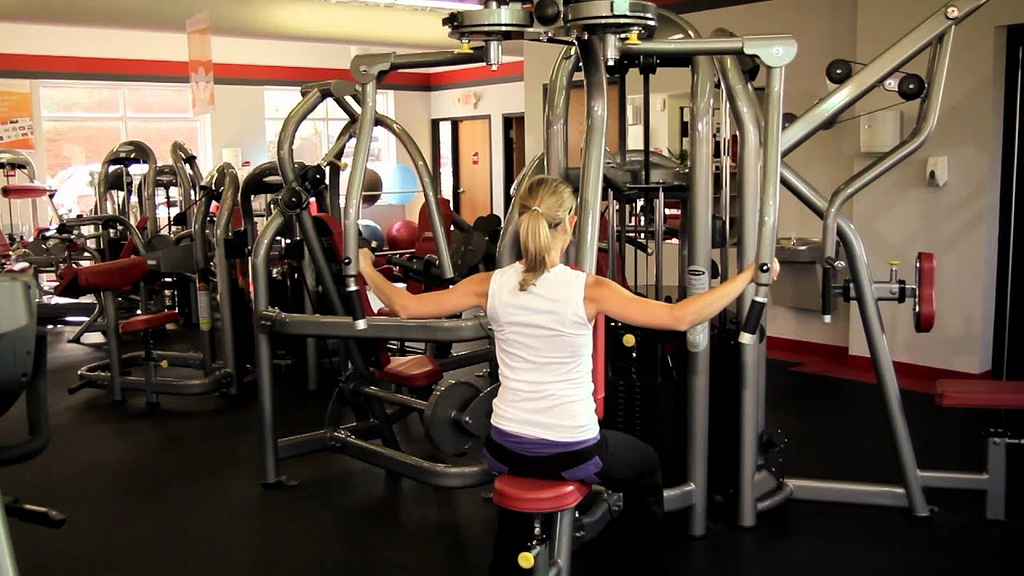
Common Mistakes While Using the Rear Delt Fly Machine
Incorrect Form
One of the most common mistakes while using the rear delt fly machine is incorrect form. Proper form is essential for working the rear deltoids effectively and preventing injury. For instance, shoulders should be in a neutral position, avoiding unnecessary shrugging or hunching 1. Keep your arms slightly bent and focus on pulling your shoulder blades together as you perform the movement. Make sure to maintain proper posture throughout the entire exercise; otherwise, you may put unwanted strain on other muscle groups.
Excess Weight
Another common mistake when using the rear delt fly machine is lifting too much weight. This can lead to improper form and increase the risk of injury. It’s important to choose a weight that allows you to perform the exercise with proper form for the recommended number of repetitions. Starting with a lighter weight and progressively increasing the load will help you build strength in a controlled manner. It may be tempting to use heavier weights to speed up progress, but using excessive force can compromise the effectiveness of the exercise and put your body at risk for harm.
Limited Range of Motion
A limited range of motion during the rear delt fly exercise diminishes its effectiveness and may hinder your progress. To ensure you are getting the most from this workout, start in the correct position with your arms parallel to the floor and maintain a full range of motion throughout the exercise2. This means both the starting position and the end position should involve the shoulder and arms’ full extension, with your shoulder blades coming together as you complete each repetition. By prioritizing a full range of motion, you’ll better target the rear delt muscles and optimize your strength training routine.
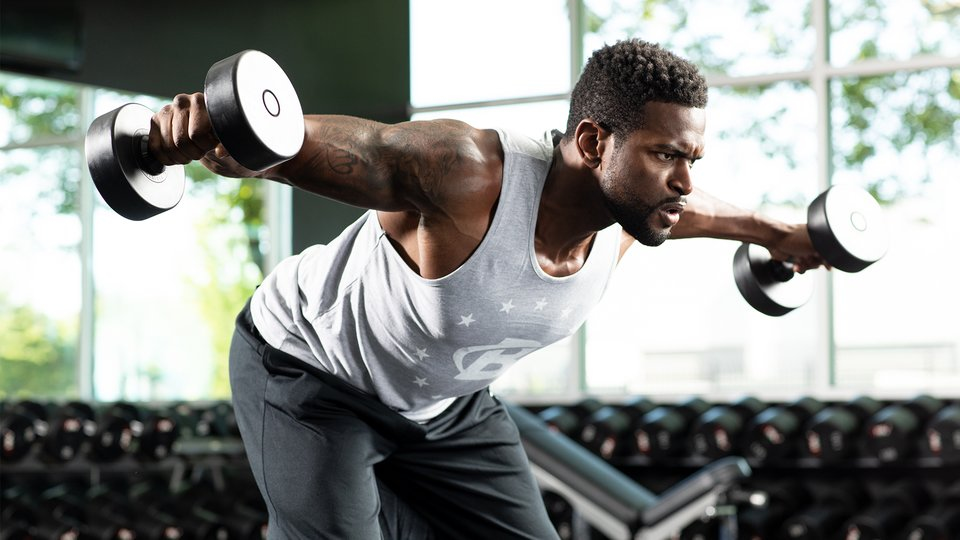
Variations and Alternatives to the Rear Delt Fly Machine
Dumbbell Rear Delt Fly
The Dumbbell Rear Delt Fly is a great alternative to using the rear delt fly machine, as it can be easily performed with a pair of dumbbells. This variation involves standing with your feet shoulder-width apart, holding dumbbells in each hand, and bending your knees slightly to maintain balance. Keep your torso parallel to the ground, and make sure your arms are slightly bent at the elbows. Hold the dumbbells beneath your chest with your palms facing inwards, then raise your arms out to the sides, aiming to squeeze your shoulder blades together at the top of the movement. Ensure you maintain control as you slowly lower the dumbbells back to the starting position. This exercise effectively targets the rear deltoids and can be a key component of a well-rounded shoulder workout.
Incline Bench Reverse Fly
Another great variation to target the rear deltoids is the Incline Bench Reverse Fly. This exercise requires an incline bench and a pair of dumbbells. Adjust the incline bench to an angle between 30-45 degrees and lie face down on the bench with your chest supported. Hold a dumbbell in each hand with a neutral grip and let them hang straight down. Maintaining a slight bend in your elbows, lift the dumbbells out to your sides, slowly squeezing your shoulder blades together as you reach the top of the movement. Return the weights to the starting position in a controlled manner, and repeat the exercise for the desired number of repetitions. The incline bench reverse fly is an excellent way to isolate the rear deltoids and minimize the involvement of other muscle groups, making it a viable alternative to the rear delt fly machine.
Machine Reverse Fly
The Machine Reverse Fly is another variation that can be performed using a cable machine or a pec deck with a reverse fly attachment. To perform the exercise using a cable machine, adjust the pulleys so they are slightly above shoulder height and attach single-handle attachments. Stand between the pulleys, grab the handles with a neutral grip, and ensure your arms are straight and parallel to the floor. With your feet shoulder-width apart and your knees slightly bent, execute the reverse fly by pulling your arms straight back and squeezing your shoulder blades together at the peak of the movement. Return to the starting position slowly and under control, repeating for the desired number of repetitions.
Using a pec deck machine, adjust the seat and arm pads so they are at shoulder level. Sit with your chest against the pad, grasp the handles, and keep your arms slightly bent. Perform the reverse fly by slowly pulling the handles back until your arms are in line with your body. Squeeze your shoulder blades together, hold the position briefly, then return to the starting position with control. Both the cable machine and pec deck reverse fly options can provide excellent alternatives to the traditional rear delt fly machine.

Frequently Asked Questions
What muscles are targeted by the rear delt fly machine?
The rear delt fly machine specifically targets muscle groups in the upper back such as the rear deltoid, traps, lats, and rhomboids. By focusing on these muscles, the exercise can help improve shoulder stability and posture.
Is there an alternative exercise to rear delt fly machine?
Yes, there are alternative exercises to the rear delt fly machine. One popular option is the dumbbell rear delt fly, which can be performed standing or bent over. This exercise still targets the posterior deltoids, traps, and rhomboids and can be done without a machine.
How do rear delt fly dumbbells compare to the machine?
Rear delt fly dumbbells offer a more free-form movement compared to the machine, requiring the stabilizing muscles to work harder. While the machine provides more control and consistency in the movement, using dumbbells can help improve overall stability and muscle activation.
Is the rear delt fly machine a push or pull exercise?
The rear delt fly machine is considered a pull exercise. During the movement, the primary muscles involved (posterior deltoids, rhomboids, and middle trapezius) work by pulling the weight away from the center of the body.
What variations can be done to target rear delts on the fly machine?
One variation of the rear delt fly on the machine is adjusting the grip and hand placement. By using a neutral or pronated grip, it can emphasize the recruitment of the rear deltoids. Additionally, experimenting with the machine’s settings, such as seat height or handle angle, can fine-tune the exercise’s focus on the targeted muscles.
What’s the distinction between chest fly and rear delt fly exercises?
The main distinction between chest fly and rear delt fly exercises is the muscle groups being targeted. Chest fly exercises primarily target the pectoral muscles in the chest, while rear delt fly exercises target the muscles of the upper back, specifically the rear deltoids, traps, lats, and rhomboids.
Footnotes
- https://anabolicaliens.com/blogs/the-signal/rear-delt-fly-machine ↩ ↩2
- https://fitliferegime.com/rear-delt-fly-muscles-worked-benefits-variations/ ↩ ↩2
- https://fitnessprogramer.com/exercise/rear-delt-machine-fly/ ↩
- https://welltech.com/content/rear-delt-fly-technique-muscles-worked-variations-to-try/ ↩
- Why is My Poop Black: Uncovering the Causes and Solutions - December 21, 2023
- Clear Protein Drinks: Optimal Hydration and Muscle Support for Athletes and Fitness Enthusiasts - December 21, 2023
- Does Apple Juice Make You Poop: Uncovering the Digestive Effects - November 29, 2023








